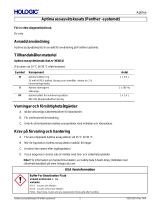
Hilti HIT-HY 200-A
29
en
Product Information
– Always keep these instructions together with the product even when given to other persons.
– Material Safety Data Sheet: Review the MSDS before use.
– Check expiration date: See imprint on foil pack manifold (month/year). Do not use expired product.
– Foil pack temperature during usage: 0 °C to 40 °C / 32 °F to 104 °F.
– Base material temperature at time of installation:
HAS-U, HIT-V, HIS, Rebar: between -10 °C and 40 °C / 14 °F and 104 °F.
HIT-Z: between +5°C and 40°C / 41°F and 104°F.
HAS-D: between 0°C and 40°C / 32°F and 104°F.
– Conditions for transport and storage: Keep in a cool, dry and dark place between 5 °C and 25 °C / 41 °F and
77 °F.
– For any application not covered by this document / beyond values specied, please contact Hilti.
– Partly used foil packs must remain in the cassette and has to be used within 4 weeks. Leave the mixer atta-
ched on the foil pack manifold and store within the cassette under the recommended storage conditions. If
reused, attach a new mixer and discard the initial quantity of anchor adhesive.
NOTICE
The surface of the HIT-Z / HAS-D anchor rod must not be altered in any way. Moreover, the thread of HIT-Z
must stay free from dirt and dust during the installation procedure.
The HIT-Z cones must be fully embedded into mortar (especially at minimum embedment).
Independently of types of application and installation, torque moment must always be applied on HIT-Z nut
and washer installed above a solid baseplate laying on concrete.
Improper handling may cause mortar splashes.
– Always wear safety glasses, gloves and protective clothes during installation.
– Never start dispensing without a mixer properly screwed on.
– Attach a new mixer prior to dispensing a new foil pack (ensure snug t).
– Use only the type of mixer (HIT-RE-M) supplied with the adhesive. Do not modify the mixer in any way.
– Never use damaged foil packs and/or damaged or unclean foil pack holders (cassettes).
Poor load values / potential failure of fastening points due to inadequate borehole cleaning.
– Hilti hollow drill bits TE-CD, TE-YD must be used in conjunction with a properly maintained Hilti vacu-
um cleaner with model and suction capacity (volumetric ow rate) as specied in the accessory table.
– The boreholes must be free of debris, dust, water, ice, oil, grease and other contaminants prior to ad-
hesive injection.
– For blowing out the borehole – blow out with oil free air until return air stream is free of noticeable dust.
– For ushing the borehole – ush with water line pressure until water runs clear.
– For brushing the borehole – only use specied wire brush. The brush must resist insertion into the
borehole – if not the brush is too small and must be replaced.
– Important! Remove all water from the borehole and blow out with oil free compressed air until borehole is
completely dried before mortar injection (not applicable to hammer drilled hole in underwater application).
– Do not exceed the roughening time when roughening the drilled hole!
Ensure that boreholes are lled from the back of the borehole without forming air voids.
– If necessary use the accessories / extensions to reach the back of the borehole.
– For overhead applications use the overhead accessories HIT-SZ and take special care when inserting
the fastening element. Excess adhesive may be forced out of the borehole. Make sure that no mortar
drips onto the installer.
– In water saturated concrete it is required to set the anchor immediately after cleaning the borehole.
Not adhering to these setting instructions can result in failure of fastening points!

















